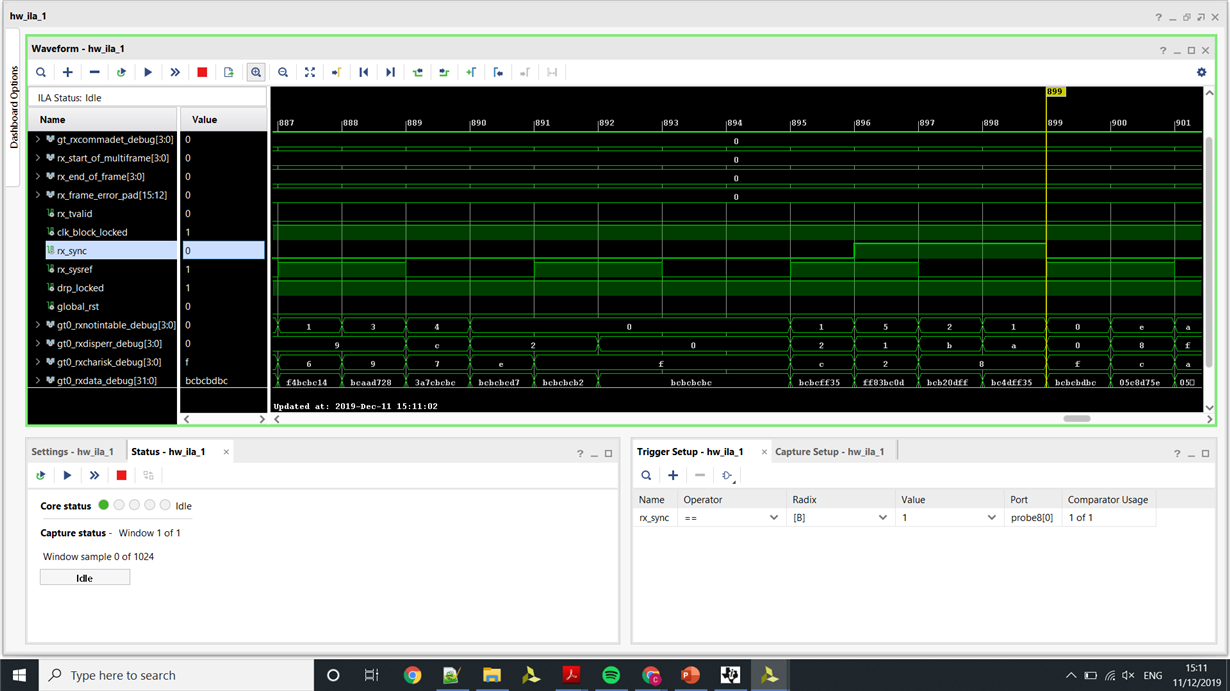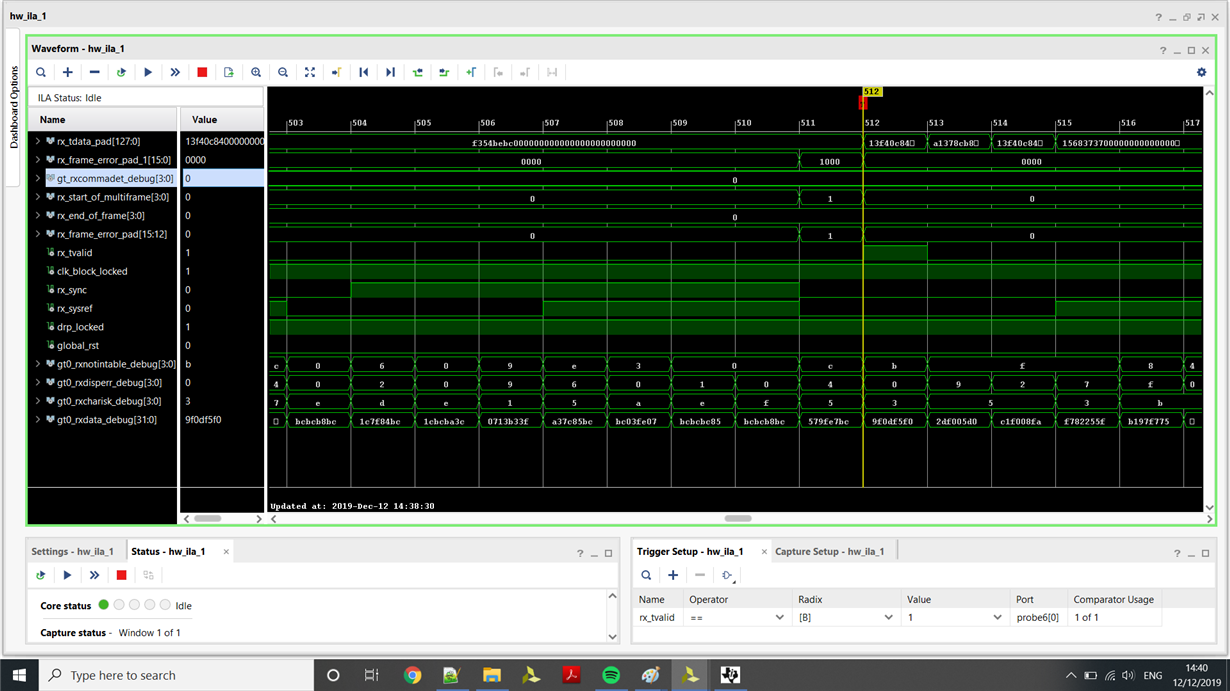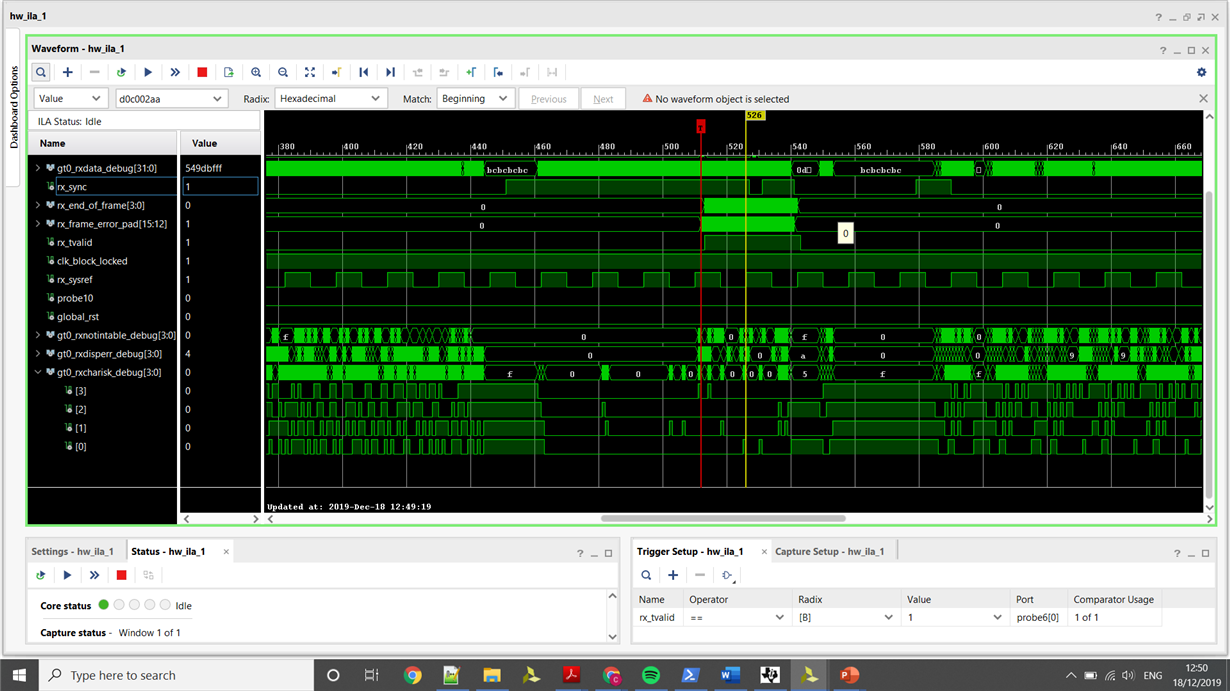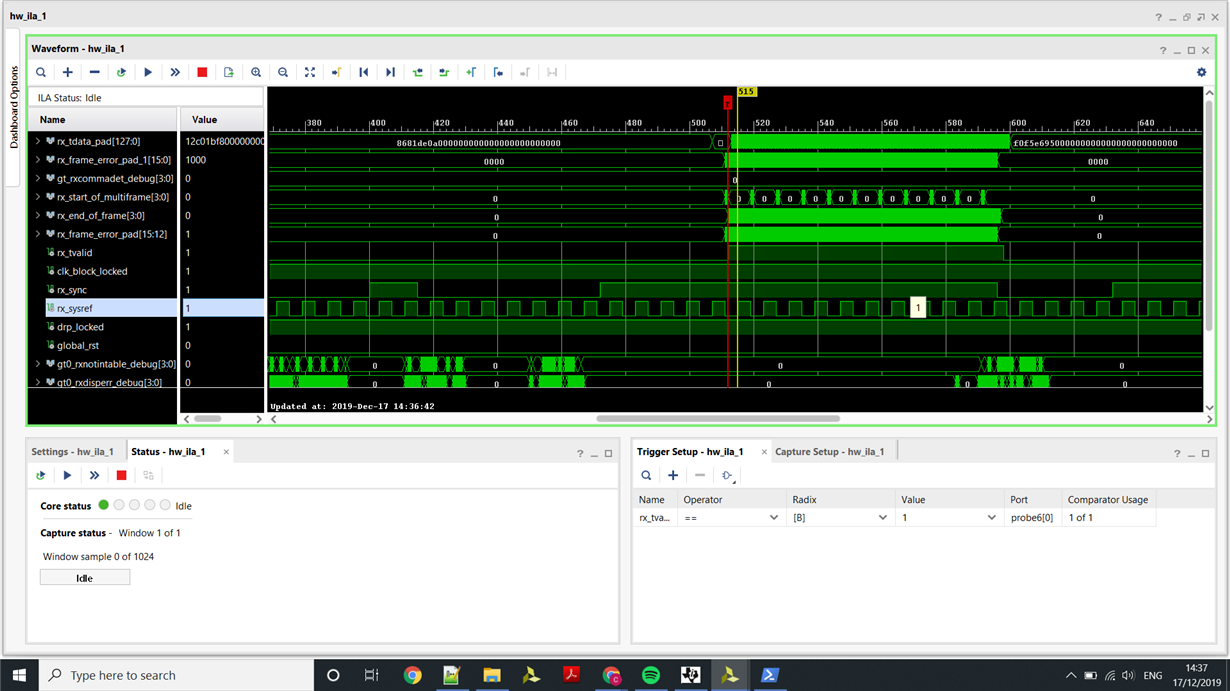Other Parts Discussed in Thread: LMK04828
i want to connect the ADC12J2700EVM to a Xilinx Kintex Ulstrascale + KCU116 dev board , i want to run the ADC in 12 bit bypass mode, however the dev board only has 4 transceiver pins through the FMC connector will i still be able get data through the JESD204b receiver in the FPGA with only half the lanes active?






